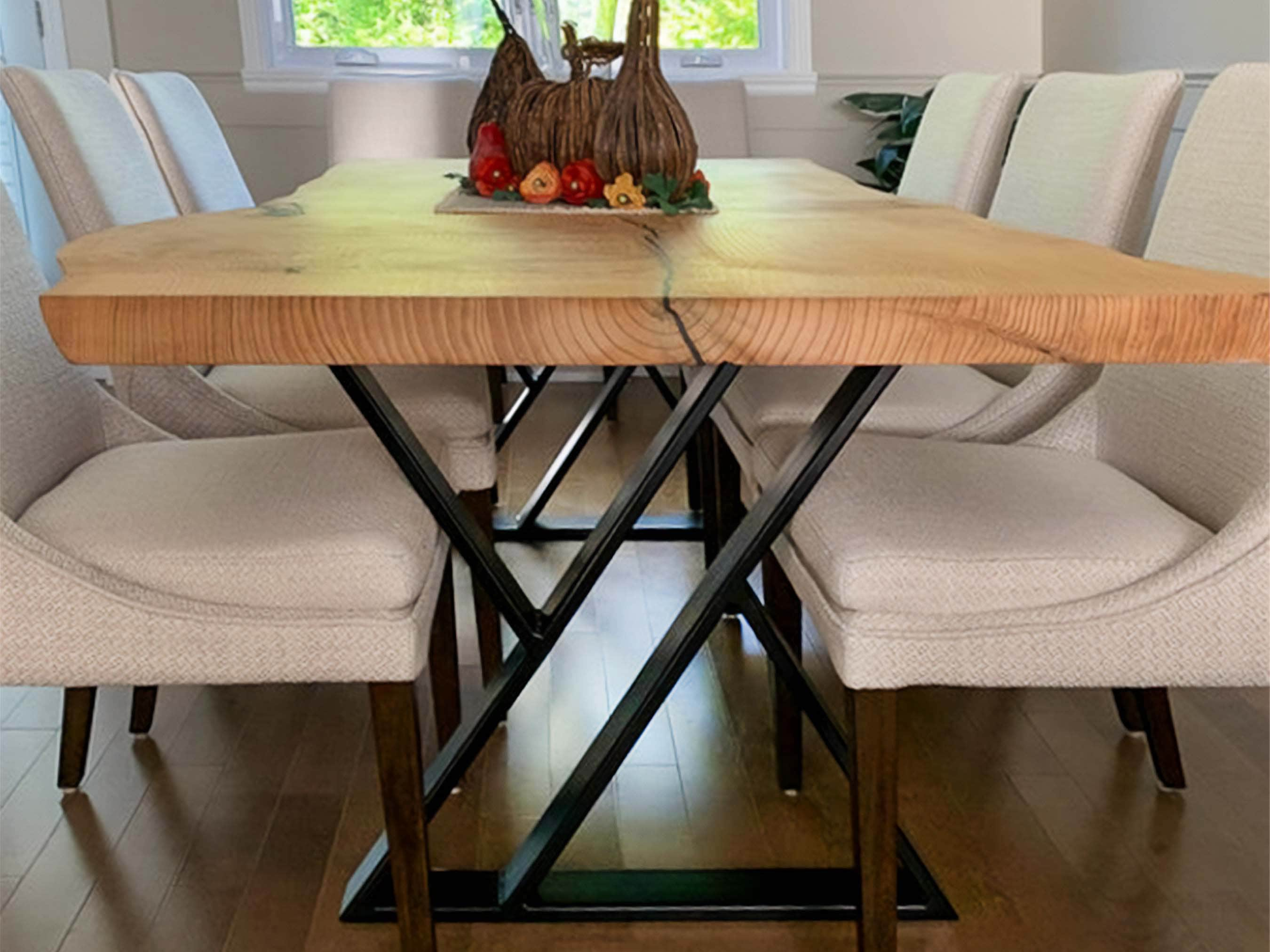Special Dining Room Table Legs to Change Your Eating Location
Special Dining Room Table Legs to Change Your Eating Location
Blog Article
An In-depth Consider Dining Table Leg Styles: Finding the Perfect Match
Choosing the appropriate dining table leg design is crucial for both visual charm and useful functionality. For those with bigger tables, trestle legs ensure tough support, whereas hairpin legs introduce a mid-century modern vibe with their minimal style. The x-shaped legs blend contemporary design with enhanced stability.
Standard Four Legs
Amongst the different kinds of dining table leg designs, the typical four-leg layout continues to be a classic option for several homes. Four legs provide well balanced assistance, making sure the table stays secure and qualified of birthing considerable weight (dining room table legs).
From an aesthetic perspective, the typical four-leg layout can be easily adapted to numerous indoor styles. Whether crafted from timber, steel, or a combination of products, these legs can be delicately carved, streamlined and minimalistic, or anything in between. Their adaptability enables them to complement both rustic and modern settings effortlessly.
Furthermore, the straightforward framework of the four-leg style facilitates convenience of activity and placement within a room. Unlike even more complex bases, this design reduces obstructions, offering ample legroom for restaurants. In recap, the standard four-leg dining table leg design weds sustaining beauty with practical performance, making it an astute selection for those seeking both kind and feature in their dining furnishings.
Stand Base
Commonly celebrated for its classy and space-efficient layout, the stand base is a distinguished alternative to the traditional four-leg configuration in dining table leg designs. This distinctive base generally includes a single central column sustaining the tabletop, which can vary in form, from ornately carved wood to smooth, modern-day steel. One of the main benefits of the pedestal base is its capability to make best use of legroom and seating versatility. Without edge legs, diners are managed better freedom of motion, making it an ideal option for round and oblong tables that promote more intimate and comprehensive celebrations.
Additionally, the stand base's main assistance can take care of substantial weight, permitting making use of much heavier tabletops, such as marble or thick hardwood. This stamina combined with its visual convenience makes the stand base a preferred selection in both typical and modern interior settings. It can perfectly integrate with various design themes, from classic style to minimal modernity. Additionally, the main column itself offers a canvas for complex designs and creative expressions, including an aspect of visual interest beneath the table. In summary, the pedestal base combines capability with design, making it a fine-tuned and practical alternative for diverse dining settings.
Trestle Legs
Trestle legs give a durable and classic foundation for eating tables, defined by their straight cross-bracing and strong assistance beam of lights. Originating from middle ages times, this style has progressed yet retained its recommended you read crucial structure, making it a seasonal favorite in both typical and contemporary setups. The central trestle beam, usually sustained by 2 or more upright posts, uses extraordinary stability, enabling larger table sizes without the demand for extra legs.
A substantial benefit of trestle leg tables is the adequate legroom they offer. Unlike tables with four edge legs, the lack of obstructions at the table's sides gives unobstructed space for chairs and diners, boosting convenience and ease of access. This makes trestle tables excellent for accommodating larger events, whether in an eating room or a banquet hall.
From rustic farmhouse to smooth contemporary styles, trestle legs can be personalized to fit private preferences. Their long-lasting allure and useful advantages make trestle legs an engaging option right here for those looking for both style and practicality in their dining table.
Barrette Legs

The appeal of hairpin legs depends on their simpleness and convenience - dining room table legs. Offered in a variety of materials, including steel and brass, they can be completed in countless colors to match different indoor designs. Whether matched with a rustic wood table top or a modern glass surface, hairpin legs easily mix functionality with a touch of vintage appeal
Longevity is another noteworthy attribute of barrette legs. Regardless of their delicate appearance, these legs are engineered to bear considerable weight, guaranteeing the table continues to be secure and secure. Additionally, they are fairly easy to set up, making them a preferred choice for DIY enthusiasts and professional furniture makers alike.
X-Shaped Legs

Built from products such as steel, wood, or a combination of both, X-shaped legs can be tailored to match different style choices. Steel legs often lend a sleek and industrial feeling, ideal for loft-style apartment or condos and modern-day eating rooms.
Furthermore, the design behind X-shaped legs makes sure even weight circulation, decreasing the threat of tottering and improving longevity. This makes them specifically well-suited for bigger eating tables that call for added assistance. In essence, X-shaped legs blend practical engineering with modern aesthetic appeals, making them an ageless option for diverse dining atmospheres.
Conclusion
A comprehensive understanding of eating table leg styles exposes the unique characteristics and benefits of each style. Trestle legs ensure durable assistance for larger tables, and barrette legs introduce a mid-century contemporary aesthetic.
Report this page